Summer viewing: short takes, part 2
Some more relatively brief comments about recently viewed disks, some of which deserve deeper consideration than I can give them here:
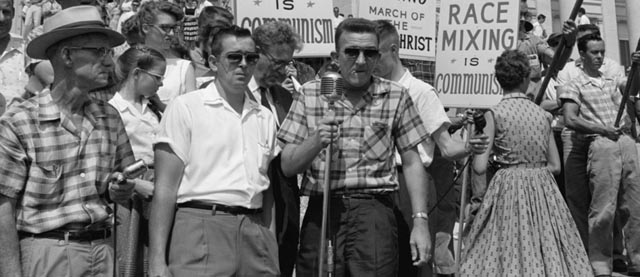
Raoul Peck’s I Am Not Your Negro (2016) is one of the most profound and affecting documentaries I’ve seen in a long time. The fierce, articulate intelligence with which James Baldwin dissected and expressed the history and meaning of race in the United States has a clarity which makes it all the more distressing that these issues remain just as deep and unresolved thirty years after his death. There is so much truth and honesty in this film, which is constructed entirely around Baldwin’s own words, that it’s both inspiring and painful to watch. If only there were more voices like this to counter the current dysfunctional political climate.
In his slim volume The Devil Finds Work (1976), Baldwin brought that same intelligence to an analysis of race in Hollywood movies, teasing out the ways in which the mainstream of American entertainment contains deeply embedded codes which reinforce cultural values which perpetuate and implicitly justify the prejudices supporting racial inequality. It was in light of this essay that I approached with interest Jordan Peele’s much-lauded Get Out (2017). I missed the film when it played in theatres, but caught up with it on disk, by which time I had read a great deal about its radical approach to issues of race. This may have been unfortunate as my expectations had been raised to a level any film would have had difficulty satisfying. My feelings about the film are ambivalent – which I’m perfectly willing to accept may at least partially be due to the fact that I’m a middle-aged white man who may well be ill-equipped to perceive some of the movie’s nuances.
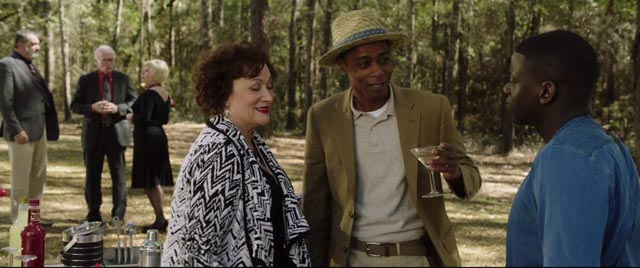
But it may also be partly due to the inherent difficulty of using an established system of narrative codes in an attempt to reconfigure a familiar genre for subversive purposes. Peele, a writer, actor and comedian, chose horror as a vehicle for his directorial debut – an interesting though not unusual decision, given the horror genre’s close affinity with comedy and satire. But for me, it was the horror element which worked against the film’s social commentary. That commentary makes the first half of Get Out excruciatingly uncomfortable in a positive, productive way; the story of an interracial couple who head off for a weekend at the white woman’s upper middle class family estate in the country is shot through with small, telling details about the implicit discomforts with race which complicate relations even among enlightened white liberals.
The car hits a deer on the way, resulting in a tense encounter with a highway cop. Chris (Daniel Kaluuya) falls back on the deferent compliance which is an instinctive survival mechanism for a black man, while Rose (Allison Williams) expresses aggressive defiance when the cop asks Chris for his ID even though he wasn’t driving. That defiance makes Chris extremely uncomfortable because the last thing he wants to deal with is an antagonized cop; it’s a particularly fraught moment given all the high-profile incidents in recent years of police violence against unarmed black men. He tries to calm Rose down to defuse the situation, perfectly willing to hand his license over; she fights for his right not to, giving expression to her own sense of liberal righteousness (and privilege) – it’s only later that we fully understand her less than pure motives for protecting her boyfriend from unwarranted harassment by uniformed authority.
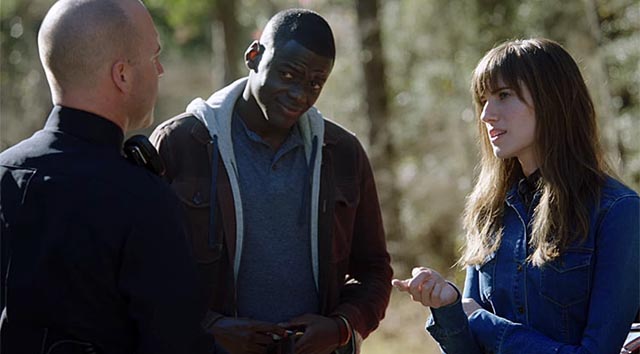
The discomfort continues when they arrive at the family home and Rose’s liberal parents, Dean (Bradley Whitford) and Missy (Catherine Keener), seem to be making a huge effort to be tolerant of her choice of a black boyfriend, which serves only to emphasize his racial difference. Peele manages to convey a great deal here about the coded behaviour of both consciously well-meaning white liberals and the black man who nonetheless feels the need to tread carefully and play a particular role which at best represents only a part of who he really is – even here, an independent, self-possessed black man assumes a guarded, subordinate position in order to avoid giving even inadvertent offence. Things aren’t helped by the deliberate offensiveness of Rose’s brother Jeremy (Caleb Landry Jones), who during dinner pushes hard to get a rise out of Chris. This first half of the movie is an anti-Guess Who’s Coming to Dinner, exposing the darker underpinnings of liberal complacency and the social minefield which Chris has to navigate in order not to offend his effusive hosts.
This is powerful material. But it gets sidetracked when Peele reveals a new layer beneath the uncomfortable social comedy. The film slides into more overt horror territory when it turns out that this is a family of body-snatchers, that Rose has lured Chris here in order to sell him to one of the family’s wealthy neighbours as part of a Stepford-like conspiracy in which aging white people have themselves transplanted into strong, young black bodies to perpetuate their lives.
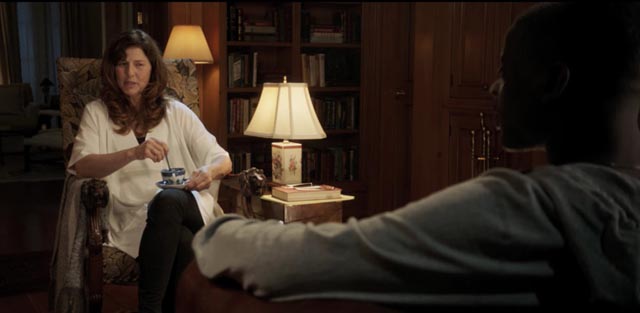
I confess that on my initial viewing little of this made sense to me: why would privileged white people want to continue their existence inside the bodies of people whom they see as inferior? Surely the last thing a racist would want is to be black? In his commentary track, Peele explains that this is a metaphor for white admiration of black bodies (particularly in the realm of sports) which does not extend to any empathy for the black persons who inhabit those bodies. While this complicates the idea of racism in the film, it seems dramatically confusing to me. When we learn that the seemingly oppressed black servants (housekeeper and gardener) are actually Rose’s grandparents, we have to understand that their embarrassing subservience is an act put on for Chris … but this wasn’t dramatically clear, particularly when we see Missy being harshly officious with the “housekeeper”.
This was just one of the things clarified in the commentary which simply didn’t come across in my first viewing – like the idea that the “soul transfer” practised by the family represents a legacy going back to the 12th Century Knights Templar, a powerful Catholic order deeply involved in the Crusades and, more importantly, finance. After the loss of the Holy Land, the Pope was heavily in debt to the Templars and used rumours of their secret rituals as an excuse to destroy the order (members were arrested, tortured and burnt at the stake). This history has fed many conspiracy theories, often revolving around supposed occult practices, which is no doubt why Peele uses them as a foundation for the mix of magic and science in Get Out – or at least, why he had them in mind as some kind of deep background to his story. But this detail certainly wasn’t apparent to me while I watched the movie. Rather, the film seems more prosaically rooted in a variation on The Stepford Wives, with black bodies substituted for the synthetic androids manufactured in that story by privileged white men determined to populate their suburb with compliant, subservient women.
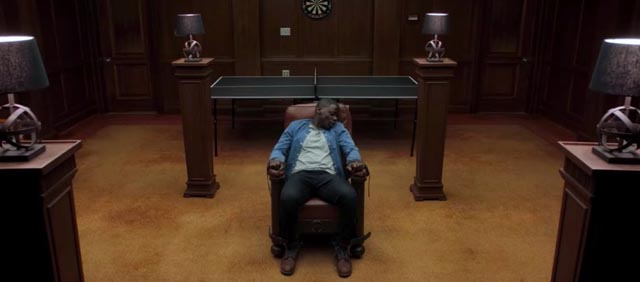
So, what began as a revealing social satire of racial relations involving supposedly enlightened liberals rather than standard racists becomes a somewhat formulaic horror film with an action climax (further undermined by a “happy” ending added after the original, more plausible darker ending was discarded). I’ll eventually watch Get Out again to see whether the two halves actually fit together more effectively than they seemed to on that initial viewing, but my first impression is that the generic elements undercut the more original aspects of the film.
In addition to the commentary and alternate ending, the Universal Blu-ray includes some deleted scenes, a behind-the-scenes featurette and a Q&A with Peele and members of the cast.
*
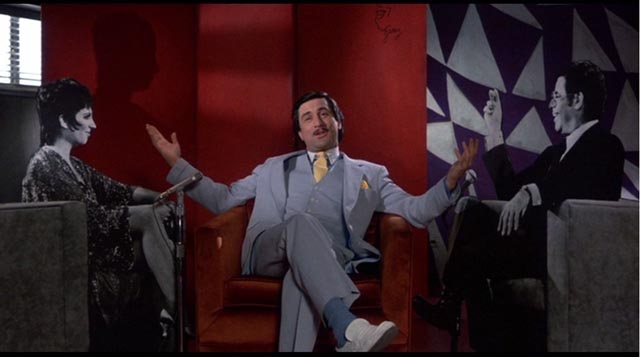
The King of Comedy (Martin Scorsese, 1982)
My favourite Martin Scorsese film still holds up thirty-five years after its release. Not only is it one of the high points of Scorsese’s craft, it stands as a career high for its three stars – Robert DeNiro as Rupert Pupkin, the nobody with a pathological desire to become a celebrity without actually having to work at it; Sandra Bernhard as Masha, his accomplice/rival celebrity stalker; and Jerry Lewis in a variation on his own public persona as talkshow host Jerry Langford. Paul D. Zimmerman’s script dextrously treads the line between character and caricature – in fact, one of its most telling insights into the dark side of pop culture fandom is the way in which the illusory relationship between celebrities and their passionate admirers turns both into incomplete one-dimensional imitations of themselves.
Fuelled by intensely uncomfortable embarrassment, The King of Comedy throws its energy into making the audience squirm. Here the line between comedy and horror is very thin, finally reiterating (more convincingly) Taxi Driver’s conclusion that celebrity is inherently a form of psychosis.
*
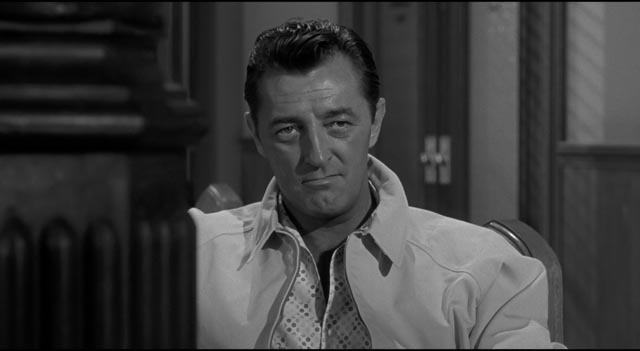
Cape Fear (J. Lee Thompson, 1961)
Martin Scorsese’s 1991 remake of Cape Fear is one of his worst movies, overwrought and self-indulgent to the point of self-parody. J. Lee Thompson’s original, based on a novel by John D. MacDonald – and made between his international breakthrough The Guns of Navarone (also 1961) and the historical tosh Taras Bulba (1962) – is a lean and nasty thriller, made with big stars on a smallish budget, shot in black-and-white on location in Georgia. Eight years after southern lawyer Sam Bowden (Gregory Peck) interrupted a sexual assault in New York City and became the key witness in the case against Max Cady (Robert Mitchum), Cady, having been released from prison, arrives in town to get revenge. Mitchum is at his reptilian best as the coolly determined psychotic who knows just how far he can push without violating the law; the film’s cat-and-mouse conflict revolves around Bowden’s legal helplessness as his wife and adolescent daughter are threatened by Cady.
With no clear recourse, Bowden sets a trap with the aim of killing Cady and establishing a defense of justifiable homicide: he “hides” wife Peggy (Polly Bergen) and daughter Nancy (Lori Martin) on a houseboat moored on the remote Cape Fear River, with himself and a local deputy hiding out on shore to wait for Cady, who has been deliberately tipped off, to arrive. Between Cady’s sadistic behaviour and threats of sexual violence against a child and Bowden’s morally compromised decision to use his daughter as bait in a plan to commit murder, Cape Fear is a very dark thriller which pushes the then-crumbling Production Code to its limits. Sure, the ideal nuclear family is preserved at the end, but that preservation has been achieved through legally and morally dubious means.
The Universal Blu-ray has a decent image, although as others have noted the transfer uses DNR to wipe away a lot of the original film grain, giving it a slightly artificial look. There’s an archival making-of with interviews from Thompson and Peck.
*
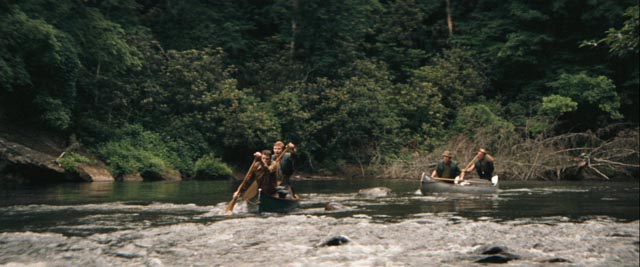
Deliverance (John Boorman, 1972)
Another Southern river provides the location and central metaphor in John Boorman’s adaptation of James Dickey’s novel Deliverance (1972). Sexual assault and the stripping away of characters’ civilized veneer are also a key element here. It’s also interesting to note that both these treatments of something dark and violent at the core of the American character were directed by Englishmen. Dickey was a noted poet and this was his first novel (which he enjoyed claiming was based on his own personal experience). The poet shows through in the script he wrote, which at times is overly “meaningful” in its dialogue.
The river here is doomed by “progress” as a big dam under construction will soon flood its valley under hundreds of feet of water. Four men from the city drive into the backwoods to take a canoe trip one last time before the river is drowned. This set-up became the basis for an entire genre of horror movies rooted in the idea that remote parts of the U.S. are populated by dangerous, uncivilized communities – from Wes Craven’s The Hills Have Eyes, Tobe Hooper’s Texas Chain Saw Massacre and Walter Hill’s Southern Comfort, on through the Wrong Turn franchise and any number of other city-folk-hunted-by-backwoods-cannibals tales – but here at the start the intentions are more serious (at least on the surface).
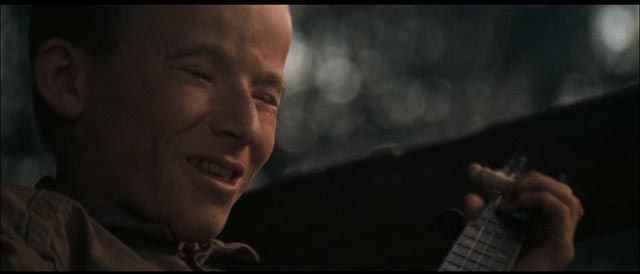
The four men are somewhat archetypal: the primitive Lewis (Burt Reynolds) who longs for a raw existence away from civilization; the sensitive Ed (Jon Voigt), too attached to his middle-class life and family to fare well in the wild; Drew (Ronnie Cox), determined to bring the rules of civilization even into this rugged backwater; and Bobby (Ned Beatty), a bit of a buffoon, too soft and ill-equipped to deal with the demands of the primal landscape. Lewis pontificates arrogantly about what it takes to be a man fending for himself, while the others tend to bicker and complain as they head downstream in a pair of canoes. The fact that at the start of the journey they encounter coarse, uneducated hillbillies sets an uneasy tone; these people have no real connection to the civilization these men have come from and it’s obvious that their community has degenerated through in-breeding. But this is their place and the guys from the city are intruders, all too willing to show their sense of superiority, even though this reveals them to be fools (Lewis refuses to ask directions to the river and gets lost driving into the woods).
The two sequences which define the film are the encounter between Drew and a banjo-playing boy named Lonnie (Bill Redden), where the city man with his guitar engages in a kind of musical duel with what is depicted as a primitive natural talent; and the later encounter between Ed and Bobby and a pair of nameless hillbillies (Bill McKinney and Herbert Coward) who rape Bobby and are preparing to sexually assault Ed when Lewis shows up and dispatches McKinney with a hunting bow. The other man gets away and the four friends have a heated discussion about what to do with the body. Drew insists that they report it to the authorities because a) it was justifiable self-defence and b) it’s the right and moral thing to do. Lewis points out that they are in effect in “enemy territory” where they will be judged as outsiders who have killed one of the community’s own. In addition, Bobby has no desire for his humiliation to become public, which it inevitably would do if they reported the incident. Drew is outvoted and they bury the body where it’ll soon be concealed forever by the flood.
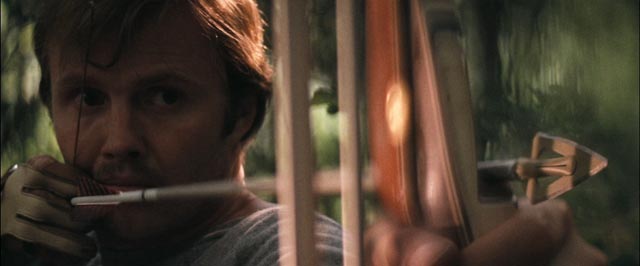
Haunted by the killing of a man and paranoid now about the hidden dangers of this wilderness, the men become careless on the river. Drew, plagued by a guilty conscience, goes over the side into the rapids – either committing suicide or having been shot by the mountain man who escaped. The film never makes his fate entirely clear, but in their fear the other three believe they are now being hunted. When the canoes capsize in white water and Lewis ends up with a badly broken leg (the primal man proving unequal to the wilderness he idolizes), Ed finally has to suppress all his civilized instincts and sets out to find and kill the remaining mountain man.
Back in “civilization” at last, at a small town preparing to be flooded by the dam, the story they concoct is treated with suspicion by the local sheriff (James Dickey) and his deputies, but there’s no evidence to prove they’ve lied. Having been brought face to face with their own primitive inner selves, they return to the city burdened by the unsavoury knowledge they’ve acquired.
Despite the at-times overly literary dialogue, Boorman stages the action on the river with visceral power. The cast take part in some quite spectacular white water canoeing which has more immediacy and dramatic impact than the conflict with caricatured hillbillies. This physical adventure is what gives the film its lasting value, while the civilization-vs-primitive narrative has no more real depth than Hooper’s and Craven’s more obviously exploitative treatments of the theme.
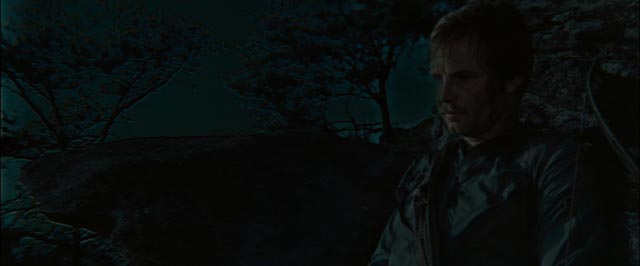
The image on the Warner Blu-ray is very uneven – partly due to the circumstances of the production, with so much of the shooting taking place out on the river, and partly due to Vilmos Zsigmond’s penchant in the ’70s for a softer, desaturated look, muting the natural colours of the wooded valley. But there’s one section of the movie which is an inexcusable mess: as Ed climbs a sheer cliff-face with the hunting bow, looking for the hillbilly who may have them all in his gunsights, the image disintegrates into the worst example of day-for-night I’ve ever seen, turning it into a smeary mess which makes Voigt all but transparent against a horribly artificial-looking sky. Apparently it was achieved by printing negative and positive images together, rather than simply using traditional strong neutral density filters to simulate night. How this passed muster with Zsigmond and Boorman is a mystery, yet in his commentary Boorman explains that it’s the best they could do (and adds that it’s not as bad as he remembers).
In addition to the commentary from Boorman, the disk also includes an extensive retrospective documentary about the production, and an archival featurette.
*
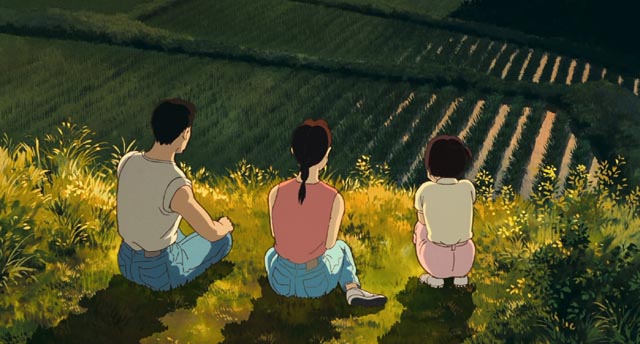
Only Yesterday (Isao Takahata, 1991)
My recent viewing hasn’t all been dark and violent. I also revisited one of my favourite Studio Ghibli features, Isao Takahata’s non-fantasy Only Yesterday (1991), which looks gorgeous on Blu-ray. I originally saw this on DVD as part of volume one of Archives of Studio Ghibli, manufactured in Hong Kong. Along with volume 2, this set includes eleven features and a Miyazaki-directed music video on six disks. Obviously the quality isn’t the best, but this is how I first saw many the studio’s productions. Takahata’s Only Yesterday and Tomomi Mochizuki’s I Can Hear the Sea (1993) were the two biggest surprises of that set because neither contains any fantasy elements – in fact, both could easily have been made as live action dramas. Both deal with characters contemplating their lives, how they reached their current state, and making decisions about their future. Mochizuki’s charming film, made for television, has modest ambitions, but Takahata’s is a richly detailed work by a mature artist working at the top of his form.
Office worker Taeko, twenty-seven and single, travels back to a small country village where she vacationed as a child. Staying with a local family and helping out on their small farm, she thinks back over her childhood, a process of self-discovery on the way towards making important decisions about where she wants her life to go from here. During her visit she resumes a friendship with Toshio, a local man she knew as a boy years before. This is a subtle character study, quietly observant of social and emotional details as a romance develops between the two of them without them being fully aware of what’s happening.
As in so many Ghibli features, the film evokes a lush landscape populated with charming characters. There’s a nostalgia for a slower, seemingly simpler way of life in which the characters are physically connected to and invigorated by that landscape.
The Gkids/Universal Blu-ray includes, as is usual with Ghibli releases, the complete animated storyboards, along with a making-of featurette and a couple of featurettes on the English-language cast. Needless to say, the English dub should be avoided; the original Japanese track is more appropriate to the film’s mood.
Comments